Lighting with Sketchy Edges
-
I am experimenting with superimposing Sketchy edges on rendered images.
Here is a Sketchy Edge interior in SketchUp.
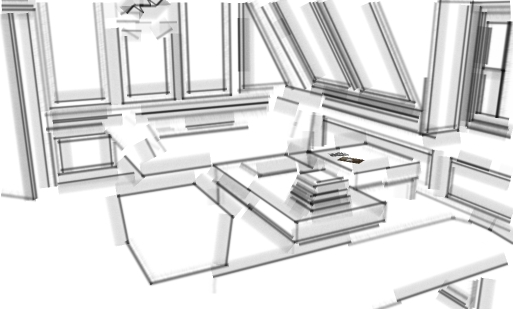
(3D Warehouse model: A CONTEMPORARY ATTIC BY ASTRID ALEJANDRA ROMERO PULIDO)Here is the same model rendered with lighting, but no edges.
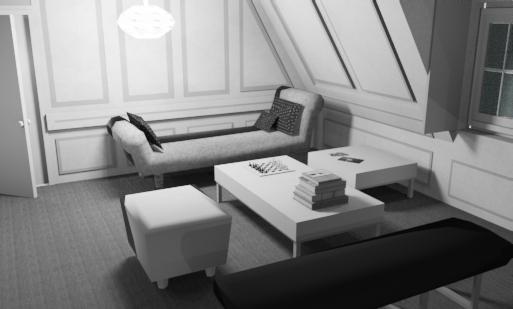
Here is a 50-50 blend of the two images.
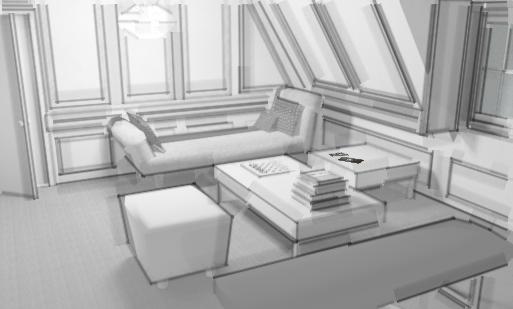
This combines the Sketchy edges with the shadows.Does this seem like it would be a useful effect?
-
looks cool al, i love line-overs like this.
But I would set your blending mode to 'multiply' for the lines so that all the white disappears. Then reduce opacity to around 50%.
Its a shame you have lost the detail in the render, unless that was your intention. It would be nice to have the detail and the bold lines together.
-
sorry like this. I hope you dont mind.
Blending mode=Multiply. Line Layer opacity= 100%

Line Layer opacity 50%
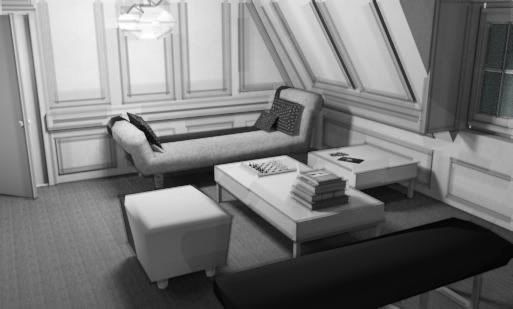
Line layer opacity 60% with colorized render layer.
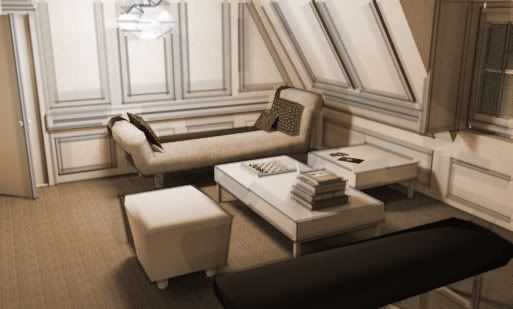
what do you think?
-
Thanks olishea,
I'll work harder to keep the detail. I thought I had the white in the line image set to transparent, but I must have missed something.
Does the "multiply" effect in Photoshop set the transparency to match the darkness of the overlaid image?
Or does "multiply" retain the darkest of the two images?
(I am trying to do this directly from SketchUp - by blending images myself - without using Photoshop) -
Multiple in Photoshop
@unknownuser said:
Looks at the color information in each channel and multiplies the base color by the blend color. The result color is always a darker color. Multiplying any color with black produces black. Multiplying any color with white leaves the color unchanged. When you’re painting with a color other than black or white, successive strokes with a painting tool produce progressively darker colors. The effect is similar to drawing on the image with multiple magic markers.
I'll look harder and see how they do it...
[Edit]
I found this equation. I'll give it a try...
Apparently they just "multiply" the RGB values individually.
-
its easy al.
with multiply.......all the white turns transparent
with screen.....all the black turns transparent.
If you ever wanna get rid of the white without masking/erasing etc just multiply. its a single click operation although yes you gotta use photoshop.
it sounds like a load of photshop mumbo jumbo that quote (just like the manual lol), just give it a go!!
-
I think you need to have only the edge on 50% like this:
(base * edge * 0.5) / 255 -
@unknownuser said:
I think you need to have only the edge on 50% like this:
(base * edge * 0.5) / 255Thanks TBD.
I wound up using
(base * (255 - (255-edge) * opacity))/255Otherwise the 0.5 would make the image too dark for the white of the edges.
-
The equation I found works pretty well at 100% opacity of the edge lines.

I'll have to think a little about how to apply it to the 50-50 blend.
[Edit]
I think I got the 50% version to work properly as well.

-
you can implement more modes - check out photoshop blend modes explained
-
I like it. I've done something similar to that.
Advertisement








